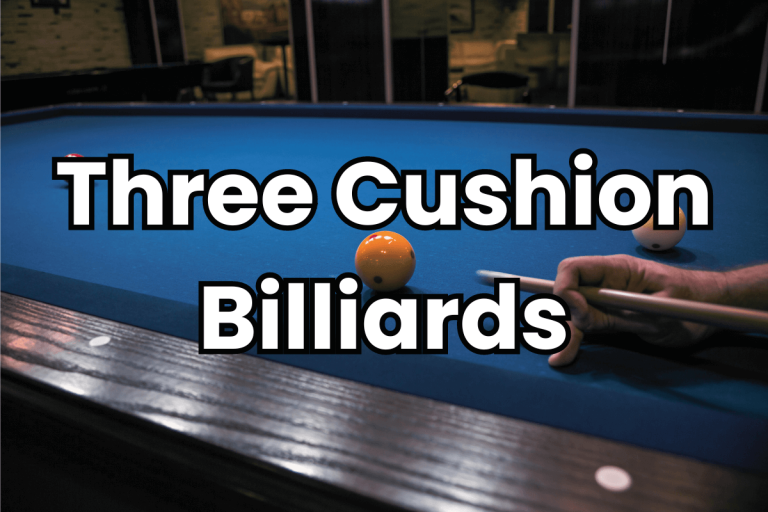How to make a pool cue | Improve your skills (2024)
Ever sink a shot with such precision, that it felt like an extension of yourself? Imagine achieving that feeling not just with your skill, but with a pool cue you crafted yourself. The satisfaction of crafting your own playing companion goes beyond the game, fostering a unique connection and a deeper appreciation for the craftsmanship behind every well-aimed shot.
This guide, How to Make a Pool Cue, empowers you to embark on this rewarding journey. We’ll delve into the essential tools, materials, and step-by-step instructions, transforming you from a curious player to a proud owner of your very own custom cue. So, grab your creative spirit and get ready to craft your cue!
Understanding Pool Cues
Before we embark on the crafting journey, let’s gain a deeper understanding of the anatomy of a pool cue. This knowledge will not only guide your construction process but also equip you to appreciate the intricate details that contribute to a cue’s performance.
The Essential Parts:
- Shaft: This is the long, slender portion of the cue where you grip and deliver your stroke. It plays a crucial role in accuracy and power transfer.
- Butt: The thicker end of the cue, often housing a weight system to influence balance and feel. It can be made from various materials and may incorporate decorative elements.
- Ferrule: This ring-shaped component connects the shaft to the tip, providing stability and protecting the shaft’s wood from wear and tear.
- Tip: The small leather piece at the very end of the cue that makes contact with the cue ball. It significantly impacts shot control, spin, and overall feel.
Material Matters:
Now that you’re familiar with the key components, let’s explore the material options commonly used for pool cue construction:
- Wood: The traditional and most popular choice, offering a classic feel, responsiveness, and various aesthetic options. Popular wood types include maple, hickory, and ash, each with unique characteristics.
- Fiberglass: Known for its durability, affordability, and resistance to warping, making it a good choice for beginners. However, some players find it less responsive and lacking the traditional feel of wood.
- Other materials: Less common options include carbon fiber and even metal, each offering specific advantages and disadvantages in terms of weight, feel, and performance.
Gearing Up for the Craft: Tools and Materials
Now that you’ve grasped the anatomy and material options of pool cues, it’s time to gather the essentials for your crafting adventure!
Must-Have Essentials:
Safety First:
Safety glasses: Protect your eyes from flying debris during woodworking tasks.
Dust mask: Mitigate the inhalation of wood dust particles.
Woodworking Tools:
Miter saw: For precise cuts of your chosen wood type (e.g., maple, hickory).
Sandpaper (various grits): To smooth and refine the cue’s surface throughout the process.
Drill and drill bits: For creating pilot holes for assembly and potential decorative elements.
Woodworking chisels (optional): For shaping specific details, especially if not using a lathe.
Clamps: To secure various components during assembly and finishing.
Cue-Specific Supplies:
Pool cue blank: This pre-shaped wooden dowel serves as the base for your cue. Choose a reputable supplier and select a blank based on your desired length and wood type.
Ferrule: Ensure it’s compatible with your chosen cue blank diameter.
Cue tip: Select a tip material and hardness that suits your playing style and preferences. Leather is the most common choice.
Wood glue: Opt for a strong, high-quality wood glue specifically formulated for woodworking projects.
Optional Enhancements:
Lathe: While not essential, a lathe can significantly simplify the shaping process and offer greater precision, especially for intricate details.
Decorative elements: Unleash your creativity! Consider inlays, engravings, or unique finishes to personalize your cue and reflect your style.
Remember, choosing high-quality tools and materials lays the foundation for a successful and enjoyable crafting experience. Don’t hesitate to consult with experienced woodworkers or cue makers for specific recommendations based on your skill level and desired outcome.
How to make a pool cue? Step-by-Step Guide
Now, armed with your newfound knowledge and gathered tools, let’s embark on the exciting journey of transforming a simple cue blank into your personalized playing companion!
Preparation:
- Selecting the Wood: Choose a seasoned, properly dried cue blank based on your desired length and wood type.
- Cutting to Size: Using a mitre saw and following safety precautions (goggles, dust mask!), carefully cut the blank to the desired length. Double-check your measurements to ensure accuracy.
- Drying, Patience is Key: Allow the cut blank to air dry further for a couple of weeks to prevent warping during shaping.
Shaping the Cue:
- Shaping the Shaft: Here, you have two options:
- Lathe Method: If using a lathe, follow the manufacturer’s instructions and safety guidelines to shape the shaft to the desired taper.
- Hand Shaping: For a more hands-on approach, use sandpaper (starting with coarse grit and gradually progressing to finer grits) to carefully shape the shaft, maintaining a smooth and consistent taper. Remember, patience and precision are crucial.
- Shaping the Butt: Utilize sandpaper or woodworking chisels (if not using a lathe) to shape the butt to your desired contour, ensuring a comfortable and balanced grip.
Attaching the Components:
- Preparing the Ferrule: Gently sand the ferrule’s inner surface to create a good bonding area. Apply a thin layer of wood glue to the corresponding area on the shaft.
- Attaching the Ferrule: Carefully slide the Ferrule onto the shaft, ensuring a flush and secure fit. Use clamps to hold it firmly in place while the glue dries completely, following the manufacturer’s recommended curing time.
- Tipping the Cue: Apply a thin layer of glue to the ferrule’s tip-receiving surface. Carefully shape the cue tip using a cue tip shaper or sandpaper to your desired profile.
- Securing the Tip: Press the tip firmly onto the ferrule, ensuring proper alignment. Secure it with masking tape or a cue tip clamp while the glue dries completely.
Finishing Touches:
- Sanding and Polishing: Meticulously sand the entire cue with increasingly finer grits of sandpaper to achieve a smooth and even surface.
- Finishing Options: Choose your desired final touch! You can leave the cue with a natural wood finish, apply a stain for color, or even use a clear coat for added protection and shine.
- Final Assembly (Optional): If incorporating decorative elements like inlays or engravings, carefully follow the specific instructions and materials required for their installation.
Remember: Throughout the process, safety is paramount. Wear appropriate eye protection and a dust mask, and always handle tools with care.
This detailed guide provides a roadmap for crafting your own pool cue. However, don’t be afraid to explore further, experiment with techniques, and personalize your creation to reflect your unique style and preferences. The journey of crafting your own cue is as rewarding as the final product itself!
Conclusion
Crafting a pool cue is a labor of love that requires a deep understanding of the game and a commitment to perfection. As a pool cue maker, I take pride in creating cues that not only look stunning but also perform flawlessly on the table. Whether you’re a professional player or an enthusiast, knowing the effort that goes into making a cue adds a new level of appreciation for this essential tool of the game.
FAQs
What are some common mistakes to avoid while making a pool cue?
Even with careful planning, mistakes can happen during the crafting process. Here are some common pitfalls to be aware of:
- Rushing the drying process: Ensure the wood is properly dried to prevent warping and potential cracks in the finished cue.
- Uneven shaping: Use appropriate tools and techniques to achieve a consistent taper along the shaft and a comfortable contour for the butt.
- Improper adhesive application: Ensure you use the correct type of glue and apply it thinly and evenly for a strong and secure bond between components.
- Over-sanding: While achieving a smooth surface is important, over-sanding can affect the cue’s balance and weight distribution.
- Skipping safety precautions: Always prioritize your safety by wearing appropriate eye protection, dust masks, and gloves when using tools.
Is crafting a pool cue difficult for beginners?
While crafting a pool cue requires some care and attention to detail, it’s achievable for beginners. This guide provides a step-by-step approach, but don’t hesitate to research further, consult experienced woodworkers, and start with a simpler design if it’s your first attempt. Remember, the learning process is part of the fun!
What are the benefits of making my own pool cue?
Crafting your own cue offers several benefits:
- Customization: You can tailor the cue to your specific preferences in terms of length, weight, balance, and even aesthetics, creating a truly unique playing companion.
- Cost-effectiveness: While high-quality materials can add up, crafting your own cue can be more affordable than purchasing a high-end cue from a retailer.
- Deeper appreciation: The process fosters a deeper understanding and appreciation for the craftsmanship that goes into creating a quality pool cue, enhancing your connection to the game.
What safety precautions should I take while crafting a pool cue?
Safety is paramount during the crafting process:
- Always wear safety glasses to protect your eyes from flying debris.
- Use a dust mask to avoid inhaling wood dust particles.
- Handle all tools with care and follow their specific safety instructions.
- Be mindful of sharp edges and wear appropriate gloves when necessary.







